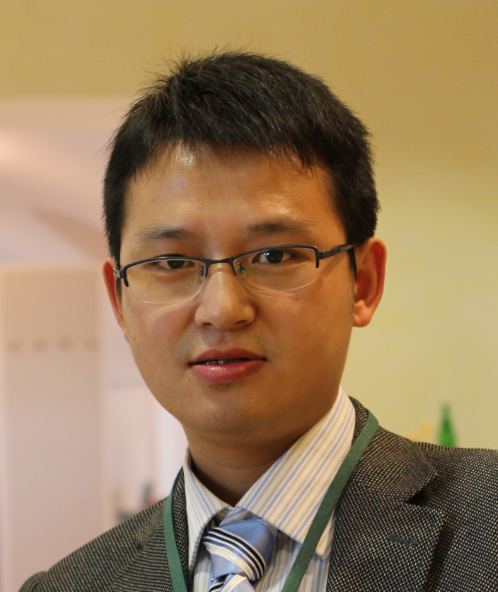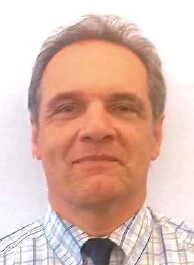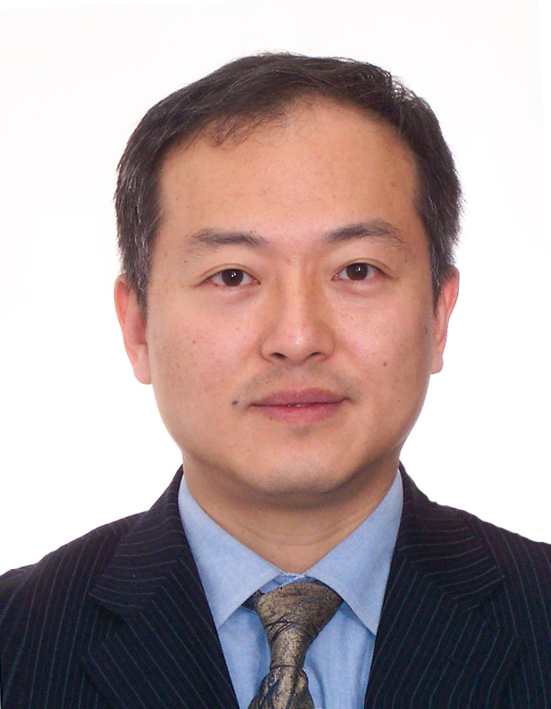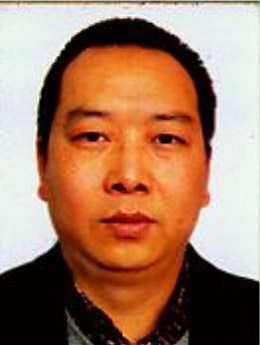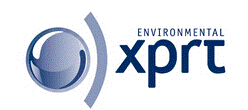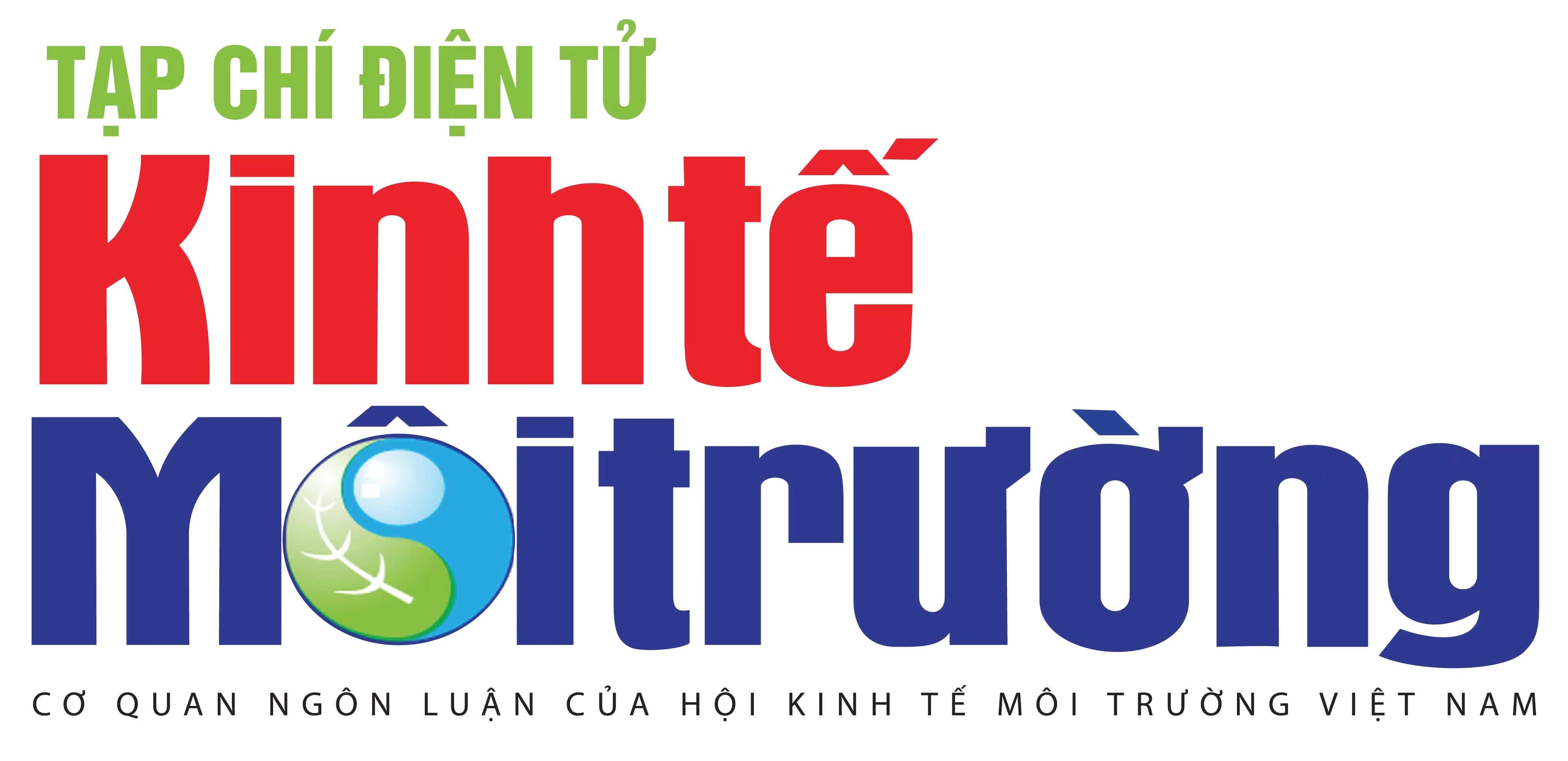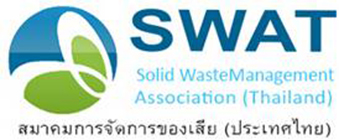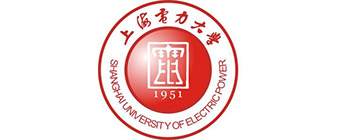|
600+Global High Level Attendees
60+Renowned High Level Speakers
60+Selected Exhibitors
Asia Food Waste Treatment Congress 2019 will be scheduled on 26th June in the same venue
Asia Sewage Sludge Treatment Congress 2019 will be scheduled on 27th June in the same venue
Inaugural Asia Waste to Energy Congress 2012 was held successfully
in Pullman Shanghai Skyway Hotel from 15th-16th Nov 2012
2nd Annual Asia Waste to Energy Congress 2013 was held successfully
in Pullman Shanghai Skyway Hotel from 24th-25th Sep 2013
3rd Annual Asia Waste to Energy Congress 2014 was held successfully
in Renaissance Beijing Capital Hotel from 22nd-23rd Oct 2014
4th Annual Asia Waste to Energy Congress 2015 was held successfully
in Pullman Shanghai Skyway Hotel from 24th-25th Sep 2015
5th Annual Asia Waste to Energy Congress 2016 was held successfully
in Pullman Shanghai Skyway Hotel from 28th-29th Sep 2016
6th Annual Asia Waste to Energy Congress 2017 was held successfully
in Pullman Shanghai Skyway Hotel from 30th Nov-1st Dec 2017
7th Annual Asia Waste to Energy Congress 2019 Event Background
According to a recent study, the market for global waste to energy is expected to grow at CAGR of 8.7 % during the forecast period 2018-2027. Global Waste to Energy Market and is anticipated to generate USD 45 Billion in revenue by the end of 2027.global waste to energy market was valued at approximately USD 28.43 billion in 2017 and is expected to generate revenue of around USD 42.74 billion by the end of 2024, growing at a CAGR of around 6.00% between 2018 and 2024.Waste to Energy (WtE) is undoubtedly becoming more important in Asia, as rising municipal solid waste (MSW)1 production in many countries means cities must rapidly develop new waste management solutions. However, while China is rapidly rolling out WtE technology, its potential is underexploited in other Asian countries. When undertaken in a best-practice manner, WtE facilities can deliver environmental, health and energy benefits, offering a valuable waste management solution.
The combination of urbanisation and economic growth in many Asian countries means that solutions are needed to dispose of increasing volumes of MSW. Urban population growth increased 8% in China, 7% in Thailand, 5% in Indonesia and 4% in Viet Nam over 2010-16 (World Bank, 2018). Urbanisation in India and Pakistan is also on the rise, although at a lower rate. Considering population growth, this trend resulted in an additional 160 million city-dwellers in these countries over the same period. In terms of economic growth over 2010-16, gross domestic product (GDP) increase in all these countries exceeded the global average.
MSW production per capita has increased as a result of these larger urban populations and the higher living standards afforded by GDP growth. Over 2010-15, annual MSW production in China, Thailand, Viet Nam, India and Pakistan combined grew by an estimated 60 Mt, to over 300 Mt; China accounted for over half of this increase. Combined waste from these countries could more than double during 2015-25, resulting in over 600 Mt of MSW annually by 2023.
China has the largest installed WtE capacity globally (7.3 GW), with 339 plants in operation at the end of 2017. WtE has grown by 1 GW per year on average in the past five years, and now represents the largest form of bioenergy capacity, capable of managing just over 100 Mt of solid waste per year (almost 40% of national production). Capacity in China grew at an annual average growth rate of 26% over the past five years, compared with 4% in OECD countries over 2010-16. Consequently, WtE capacity in China is now equivalent to 40% of that installed in all OECD countries combined. It has been expanding more slowly in the other five Asian countries mentioned, however, at an average rate of 16% annually.
Government targets indicate that WtE capacity will continue to expand in China: under its 13th FYP, 10 GW of the 23-GW bioenergy target for 2020 is allocated to WtE, which will account for more than 50% of MSW treatment nationwide. Within the Renewables 2018 main case forecast, therefore, WtE capacity in China grows to over 13 GW by 2023, and by 2025 it could manage 260 Mt of MSW. However, there have been incidents of public opposition to WtE on air quality and health grounds, so realising projected growth will require sensitively conducted public consultations and the use of best available technologies.
Several policies are spurring WtE capacity deployment: first, a FIT of RMB 0.65/kWh (USD 95/MWh) has been in place since 2010, and local municipalities also support WtE through waste disposal fees, low-cost loans and fiscal support. In addition, the 13th FYP allocates more than USD 40 billion of funding to new facilities. This combination of measures makes WtE development economically attractive.
WtE deployment in India has been slow: just under 300 MW of capacity had been installed at the end of 2017, and the country¡¯s largest plant (24 MW) was commissioned in New Delhi just last year. Factors favouring further WtE deployment include the availability of tipping fees, tax incentives and financial de-risking measures. In addition, states have been directed to procure all electricity generated from WtE projects, and national waste management rules encourage waste segregation and require that non-recyclable waste of high calorific value be used for energy. Conversely, low rates of processing and treating collected MSW hinder sector expansion.
Thailand is also in the early stages of WtE deployment. Several projects are in development and capacity could grow to over 200 MW by 2021, and a longer-term target of 550 MW by 2036 is in place under the Alternative Energy Development Plan. A FIT of USD 155/MWh to USD 190/MWh currently supports deployment, but development is being scrutinised by community groups to ensure projects meet the necessary construction and operation standards.
In Indonesia, Viet Nam and Pakistan, WtE deployment is hampered by several key challenges,however, policy support in all three countries is gaining strength. Pakistan introduced an WtE tariff of USD 100/MWh in 2018, and projects are in development in Lahore and Islamabad. Viet Nam has introduced fiscal tax exemptions, a guaranteed power offtake, and a tariff of USD 73/MWh to USD 105/MWh to encourage WtE projects, and the
Asian Development Bank has made loan funding available for WtE plants in the Mekong Delta. In Indonesia, a national strategic project has been announced to develop WtE plants in 12 major cities with a purchase tariff of USD 133/MWh.
On March 15, 2018, the MEE released the ¡°Environmental Access Conditions for WtE Project (Trial)¡±, requiring waste incineration plants to establish mechanisms and platforms for good interaction and regular communication with the surrounding public, communicate with daily communication channels. Guide to build YIMBY type waste incineration plant.
On June 24, 2018, the "Opinions of the CPC Central Committee and the State Council on Strengthening Ecological Environment Protection and Resolutely Fighting Pollution Prevention and Control" will achieve full coverage of all municipal and county municipal solid waste treatment capacity by 2020. Promote the utilization of waste resources and develop waste incineration power generation vigorously .
On October 25, 2018, the MOF, SAT, MEE jointly issued the Notice on the Relevant Issues Concerning the Application of Environmentally Friendly Taxable Pollutants, the wte plants established legally does not need to pay the ep tax,in case of the emission of taxable pollutants does not exceed the national and local emission standards.
On December 7, 2018, the MEE issued an expedited Notice on the Implementation of Electronic Supervisory Controls for Automatic Monitoring of Flue Gas Emissions from WtE Plants.MEE will supercharge the abnormal electronic supervision of the wte plants.All localities should urge waste incineration plants to actively mark the open and automatic monitoring of anomalies in the incineration system.Focus on supervising problems. For the waste incineration plants with automatic daily average value exceeding 10% in November 2018, please supervise the local people's government to supervise the organization, organize waste incineration plants to investigate the reasons for exceeding the standard, formulate and implement corrective measures.
On December 25, 2018, the National Energy Administration issued Announcement No. 16 of 2018, which approved 204 industry standards and released them. The second batch of three power industries proposed and organized by the China Power Enterprise Association Waste-to-Energy Standardization Technical Committee Standard "Technical Specifications for Monitoring Systems for Waste-to-Energy Plants" (DL/T 1937-2018), Technical Specifications for Slag Treatment of Waste-to-Energy Plants (DL/T1938-2018), Technical Specifications for Leachate Treatment in Waste-to-Energy Power Plants (DL/ T 1939-2018), will be formally implemented on May 1st 2019.
On September 4, 2017, the General Office of the People's Government of Liaoning Province issued a notice on the implementation of the four-year rolling plan for the urban and rural msw sorting in Liaoning Province (2017-2020), accelerate the construction of msw incineration facilities, improve msw incineration treatment ratio of capacity to total processing capacity. In areas where msw incineration facilities are being built, it is necessary to speed up the construction progress and put them into operation as soon as possible; the areas under preparation should accelerate the construction of facilities in accordance with the principles of scientific planning, rational distribution, and regional integration.
On November 10 2017, the General Office of the Beijing Municipal People's Government on accelerating the promotion of msw sorting work, optimizing the layout of waste treatment facilities, and accelerating the construction of msw incineration facilities, sanitary landfill facilities, and organic waste treatment facilities.
On November 23, 2017, the Development and Reform Commission of Guangxi Autonomous Region and the Housing and Urban-Rural Development Office issued the ¡°Guangxi MSW Sorting System Work Plan¡±explored the establishment of msw incineration, kitchen waste resource utilization, recycling of renewable resources, landfill, Hazardous waste disposal in one of the domestic waste collaborative disposal and utilization base actively .
On November 28, 2017, "Jiangsu Province MSW Sorting System Implementation Measures" was issued, Jiangsu will accelerate the construction of msw incineration treatment plant and sanitary landfill.
On December 15, 2017, the notification of the implementation of Tianjin MSW Sorting Management, the municipal land and housing management department is responsible for the construction land use of msw sorting facilities, prioritizing the land use planning indicators for waste incineration treatment facilities, and rationally arranging the necessary supporting project construction land to ensure the project launch.
On January 5, 2018, the Shanxi Provincial People's Government issued a notice on the issuance of the ¡°Shanxi Province Energy Saving and Emission Reduction Implementation Plan¡±. The harmless treatment rate of msw in the built-up area of Taiyuan City will reach 100%; other cities reach over 95%. the county (built-up area) will reach more than 80%. The municipal solid waste incineration capacity accounts for more than 50% of the total harmless treatment capacity by 2020.
On March 29, 2018, Hunan Provincial Department of Housing and Urban-Rural Development, Hunan Provincial Development and Reform Commission, Hunan Provincial Department of Land and Resources, Hunan Provincial Department of Environmental Protection, notice on further strengthening the construction of municipal solid waste incineration facilities, from 2018 to 2020, cities The state adopts urban and rural overall planning and regional co-ordination methods to build and expand a number of msw incineration power generation treatment facilities to cope with urban and rural msw. By 2020, the municipal waste incineration power generation treatment facilities will cover 14 cities and prefectures, and all the areas where the five RD wet treatment plants are located will properly handle the msw according to the requirements of environmental protection inspection; the municipal solid waste incineration capacity will account for the total processing capacity.more than 50%.
On May 18, 2018, Anhui Province issued the implementation plan for the three-year action plan for the renovation of rural human settlements. The plan proposes to support the construction of msw incineration power plants in counties (cities, districts) with large populations, and encourage municipal construction regional municipal solid waste incineration power plant.
On June 7, 2018, Gansu Province Special Action Plan for Clean Energy Industry Development,Gansu will focus on promoting the construction of urban msw incineration power generation projects in counties with resource conditions actively , implement environmental protection measures strictly , and improve the level of resource recycling comprehensively.
In August 2018, Guizhou Province issued the "Opinions on Strengthening the Construction of MSW Incineration Power Generation Facilities", 17 new and mswincineration power generation facilities will be built and expanded in Guizhou Province, with a scale of 12,900 tons/ Day, msw incineration scale of the power generation facilities will reach 19,200 tons/day,the treatment capacity accounted for more than 60% of the province's urban msw disposal capacity. it strives to fully cover the msw resource treatment capacity of the cities above the county level by 2020, improve the msw incineration power generation treatment ability furtherly,the processing capacity accounts for more than 70% of the province's urban msw disposal capacity, and strives to cover all established towns in the msw treatment facilities,the province realizes the treatment of urban msw resources basically by 2022.
On September 13, 2018, the General Office of the People's Government of Heilongjiang Province issued the "Three-Year Action Plan for Improving Urban MSW Management Capacity in Heilongjiang Province (2018-2020)". By the end of 2020, will strive to make province's MSW harmless treatment capacity meet national requirements level. the preparation of the "Middle and Long-term Special Plan for MSW Incineration Power Generation in Heilongjiang Province (2018-2030)" was completed first. The second is to focus on the incineration process, accelerate the construction of msw treatment facilities, and plan to build and reconstruct 38 msw disposal sites across the province. Priority should be given to the waste incineration treatment facilities and supporting land use plans to ensure the project landing. Implement the full acquisition of msw power generation, on-grid electricity prices and tax incentives strictly.
On September 28, 2018, the General Office of the Hebei Provincial Party Committee and the General Office of the Provincial Government issued the "Three-Year Action Plan for Urban and Rural MSW Treatment Facilities in Hebei Province (2018-2020)", focusing on the development of msw incineration power generation technology and encouraging regional cooperation. Construction of shared incineration facility, develop biological treatment technology, rationally plan landfill treatment technology actively, accelerate the construction and renovation of msw treatment facilities, and realize the full coverage of msw treatment facilities by 2020 basically, and realize that msw should be burned in the plain area, and the mountain area is harmless disposal.
On November 20, 2018, the Henan Provincial Development and Reform Commission issued a plan for the implementation of the ¡°Middle-and Long-Term Special Plan for MSW Incineration Power Generation (2018-2030)¡± from 2018 to 2030, of which was recently year 2018-2020, medium and long term for 2020-2030. According to the planning goal, counties (cities) with outstanding problems in overload operation of downtown areas and some msw sanitary landfills in various provinces have basically completed msw incineration power generation projects by 2020. the province will form the main msw innocuous incineration system, the municipality with conditions to achieve the realization of the original landfill "zero landfill", the province's msw incineration capacity of about 84,000 tons / day, the total installed capacity of about 1.6 million kilowatts, msw incineration treatment capacity ratio is around 70% by 2030. In terms of improving the capacity of waste incineration, according to the principle of ¡°provincial leveling, city and county main body¡±, 75 new municipal solid waste incineration power generation projects will be planned within the province, and all mswwaste incineration capacity will be increased after completion.75,000 tons / day.
On January 16, 2019, Hainan Province issued the "Notice on Strengthening the Prevention and Control of Air Pollution", "Six Prohibitions for Two Advancement". The "Notice" requires: the introduction of a medium- and long-term special plan for municipal solid waste incineration power generation, and rational distribution of waste incineration power generation projects across cities and counties to achieve efficient and scientific use of waste. The Medium and Long-term Special Plan for MSW Incineration Power Generation in Hainan Province (2018-2030) will expand and build nine large and medium-sized waste incineration treatment bases for cross-regional services, which are planned in Haikou City, Sanya City, Zhangzhou City, Wenchang City, and Qiong Hai City, Dongfang, Suichang, Lingshui and Changjiang counties.
7th Asia Wste to Energy Congress 2019 Key Features
Global urban msw management department decision makers network on the treatment approach operational experience and strategy
How to shorten the project preliminary examination planning, environmental assessment, feasibility study, approval, land approval, report construction land acquisition, demolition and resettlement coordination time
How to coordinate finance, development and reform, land, planning, environmental protection, legal departments efficiently
How government and investors resolve the conditions for cooperation in fairness and impartiality, major legal risks, and operational maintenance effectively
Assisting the B&R strategy countries and China as well as decision makers in the specific local city msw management departments to solve the msw environmentally friendly disposal problem
How to design a YIMBY waste incineration project, process technology, project building standard, waste disposal service fee
How to build high standards, high quality waste incineration power generation project
How to leverage cloud computing, digitization, big data, artificial intelligence, and Internet of Things technologies to improve combustion power generation efficiency and reduce flue gas emissions
Waste incineration power generation projects operational excellent management
Waste incineration power plant equipment fault prediction and maintenance, clean compliance incineration, improve enterprise economic benefits
How to assist waste incineration power plants to treat exhaust gas(hcl sox nox dioxin mercury pm), waste water,slag, fly ash
How to assist decision makers in urban msw management departments to sort and collect transport work well
Debate the future of the emerging waste conversion market with industry leaders
Benefit from technical expertise insight from some of the industry¡¯s leading technology providers
Network and do business with the leading WtE projects owners in the region
Discover new commercial opportunities in 2020 and beyond
Position your company at the forefront of the emerging WtE industry in China,Asia,World
Asia Food Waste Treatment Congress 2019 Event Background
Food waste is a global problem. According to Food and Agriculture organization (FAO) of the UN, approximately one third of the food produced for the human consumption, which amounts to 1.3 billion tones, gets lost or wasted.By 2050,there will be over 10 billion people living on the planet.We will need to increase production capacity by around 60% to feed everyone on the globe.According to the United Nations Food and Agriculture Organisation(FAO),roughly one-third of all food produced for human consumption gets lost or wasted every year.This equals approximately 1.3 billion tonnes yearly,and as per the FAO webiste,Asia is one of the biggest culprits.Industrialised countries waste roughly twice as much food as developing countries.But plenty of food is lost in developing countries too, usually because of a lack of proper storage and transport as food is moved from the farm to the market.South and South East Asia combined produce roughly 25% of the world's food waste,and industralised Asia(China,Japan,South Korea) makes up about 28%.Together,this makes up over 50% of global food wastage.Additionally,over 40% of fruits and vegetables,and roughly 30% of grains in the Asia Pacific region are lost along the food supply chain before reaching consumers.
China is a big country in the production of food waste, certainly it is related to China's population base.Meanwhile, with the rapid growth of China's economy, the acceleration of urbanization and general improvement of people's living standards, people's demand for food quality is also increasing,people's requirements for food have changed from the previous "satisfaction" to "eat well",this has also led to an increase in the amount of food waste generated in China.The retail sales of the catering industry grow at a rate of 21% per year, and the food waste will also roll as a snowball.From 2008 to 2015, China's catering industry revenue increased by 486.282 billion rmb to 486.401 billion rmb.In 2015, the number of employees in China's catering industry reached 2.22 million at the end of the year, with a business area of 5,366,250 square meters. The rapid development of the catering industry has brought a lot of food waste.During the ¡°12th Five-Year Plan¡± period, the amount of Chinese food waste generated was 40 million tons/year, about 100,000 tons/day.The national food waste production amount was about 91.1 million tons, and the daily average food waste production amount was 250,000 tons/day, the per capita daily output was 0.18kg in 2015.The amount of domestic msw in China was about 204 million tons. If we take 36% to 37% of the proportion of food waste, the clean up amount of food waste in China will be at least 74 million tons. generated amount was around 97 million tons in 2016,converted to 210,700 tons per day.According to statistics, the China's urban catering industry income in 2017 was about 3.96 trillion rmb. If the proportion of leftovers in a catering activity is between 1/4 and 1/3, the Chinese catering industry will have nearly one trillion rmb sales become "junk" each year.The proportion of Chinese food waste to msw is roughly from 37%-62%.Neanwhile, with the continuous improvement of the people's living standards in the country, the structure and quantity of mass catering will be more abundant, so we are convinced that this proportion will continue to climb.According to statistics, many developed cities produce more than 3,000 tons msw per day, of which food waste accounts for about 50% or more. The large amount of food waste also requires the Chinese food waste treatment industry have stronger disposal capacity.
In December 2008, the NDRC and the MOHURD identified the problems China's food waste treatment industry faced and provided ideas for the next steps of various ministries.
In May 2010, the NDRC and other four central ministries and commissions jointly issued the ¡°Notice on Organizing the Pilot Work of Resource Utilization and Harmless Treatment of Urban Food Wastes¡±, and selected 33 national first-line cities including Beijing, Shanghai, Harbin and Wuhan as first pilot city. In 2012, 2013, 2014 and 2015, four batches of pilot cities were announced respectively. The total number of pilot cities reached 100, covering 32 provincial-level administrative regions.
In July 2010, the General Office of the State Council issued the ¡°Opinions on Strengthening the Improvement of Waste Oil and the Management of Food Wastes¡±, and proposed to regulate the treatment of food waste, strengthen the management of the collection and transportation of food waste,establish the management of food waste. The account system and serious investigation and punishment of violations of laws and regulations to strengthen the management of food waste. In addition,strive to solve the problem of ¡°gutter oil¡± by starting from the source, comprehensively controlling measures such as unblocking and combining the symptoms and the root causes of the disease, and cutting off the interest chain of ¡°gutter oil¡±.
In April 2011, the MOHURD and other 16 central ministries and commissions issued the ¡°Opinions on Further Strengthening the MSW Treatment, proposing that by 2015, each province (district) will build more than one msw sorting demonstration city, 50% of the district-based city initially realized the sorting collection and food waste processing.
In April 2012, the State Council issued the ¡°12th Five-Year Plan for the Construction of Harmless Treatment Facilities for MSW, and proposed to invest 10.9 billion yuan in the food waste treatment facilities during the ¡°Twelfth Five-Year Plan¡± period, striving for the number of food waste treatment facilities reached 242, and the processing capacity reached 30,000 tons/day to 2015.
In July 2012, the MOF and the NDRC issued the Interim Measures for the Administration of Special Funds for Circular Economy Development. The plan proposes that the pilot city will build a food waste treatment facility. The central government will allocate 50% of the subsidy funds to start the fund, If the total amount of food waste treatment exceeds the set target by more than 90% within 5 years, the remaining funds will be disbursed for the passing of the assessment, and 80% of the funds already disbursed will be recovered if it fails.
In 2015, the NDRC, MOF, and the MOHURD jointly issued the ¡°Measures for the Mid-term Evaluation and Final Acceptance of Pilot Food Waste Utilization and Harmless Treatment¡± to strengthen the pilot utilization of waste utilization and harmless treatment of food waste management, play the role of exploration and leading role in pilot demonstrations, and improve the efficiency of the use of central government funds.
From a local point of view, according to incomplete statistics,Nanning, Sanya, Hefei, Nanchang, Dalian, Tangshan, Yichang, Lijiang, Wuhu, Guangzhou, Tongren, Xuzhou, Yantai, Nanjing, Tongling and other cities have implemented food waste management method successively, 62 cities in 100 pilot cities have implemented the food waste management regulations, 10 cities have introduced the implementation rules or implementation plans for food waste management, and 3 cities have issued management opinions. 8 cities is preparing a draft of food waste management, accounting for 83% of the cities that have been introduced and plan to introduce regulations on the management of food waste.
In September 2015, Zhejiang Province issued the ¡°Zhejiang Province Food Waste Recycling Comprehensive Utilization Action Plan¡±, which stipulated that the provincial-level pilot implementation of the mayor responsibility system and the promotion of the food waste treatment construction through the leadership responsible system.The ¡°Measures for the Administration of Food Wastes in Hangzhou¡± also was implemented on April 1, 2016.The regulations stipulate that restaurants shall not hand over the food waste to units or individuals that have not obtained the commercial collection and transportation permit for msw. The newly opened catering service providers shall provide the sanitation and sanitation to the district/county (city) within 3 months after the opening of the business. The competent department shall record and record the total number and destination of the food waste, and the record retention period shall not be less than 2 years.January 20, 2017 The ¡°Measures for the Administration of Food Wastes in Zhejiang Province¡± has been reviewed and approved at the 76th executive meeting of the Provincial People's Government and was be implemented as of July 1, 2017.In order to unify the technical requirements for the treatment of food waste in Shenzhen, promote resource conservation and environmental protection, the Shenzhen Standardization Technical Document ¡°Technical Specification for Food Waste Disposal¡± (No. SZDB/Z252-2017) was formulated. It was implemented on August 1, 2017.
Although the operability of some urban food waste management methods needs to be improved, with the implementation of these management methods, the special atmosphere of the collection and transportation, harmless treatment and resource utilization of food waste has been basically formed.
In July 2018, the MEE issued a public consultation on the "Law of the People's Republic of China on the Prevention and Control of Environmental Pollution by Solid Wastes (Revised Draft) (Draft for Comment)", which targets the treatment of MSW, including food waste. The relevant regulations on food waste management have become the attention focus.Regulations: The environmental health administrative department above the county level is responsible for organizing the comprehensive utilization and harmless disposal of food waste.
From September 2015 to the present, the Central Committee of the Communist Party of China, the State Council,Central Financial and Economic Leading Group, the General Office of the State Council, the NDRC, and the MOHURD have introduced a package of MSW sorting schemes.
Due to the promotion of the top-level ¡°mandatory sorting¡± policy, the progressive implementation of the sorting of dry and wet waste in various local places,For example: Beijing will implement the separation of dry and wet waste in the next step.On January 31, 2019, the Second Session of the 15th Shanghai Municipal People's Congress voted to pass the "Regulations on the Management of MSW in Shanghai" (hereinafter referred to as the "Regulations"), and will officially begin implementation on July 1.Guangzhou Urban Management will further promote the waste sorting. In 2019, there will be six districts in Guangzhou that will implement the mandatory waste sorting in the whole district.Shenzhen will introduce local regulations on waste sorting.On January 22, 2019, the Tianjin Municipal Management Committee organized key units in the transportation industry to hold a 2019 public organization for the mandatory msw sorting.Chongqing Municipality on the msw sorting management method was implemented on January 1, 2019.This creates a good condition for food waste disposal. China's food waste treatment market is rapidly increasing, and the future space is huge.
During the ¡°Twelfth Five-Year Plan¡± period, large-scale pilot construction of food waste treatment facilities began. According to incomplete statistics, there are 118 food waste treatment projects that have been built, under construction and prepared in the country, with a total processing capacity of about 21,500 tons/day, compare with 30,000 tons in the ¡°Twelfth Five-Year Plan¡±target,the processing capacity of the day" has a gap of 0.8 million tons / day.Most of the 40 processing facilities under construction are only in the stage of completion.In addition, there are still many no pilot cities are planning to build food waste treatment plants, some of which are pilot
city has not yet seen reports on the building food waste treatment facilities.Overall, there will still be a large market for the food waste treatment facilities in the next few years.
Chinese cities produce no less than 60 million tons of food waste per year, and the average annual growth rate is expected to reach more than 10%.According to the "13th Five-Year Plan for the building of Harmless Treatment Facilities for msw", by 2020, most of the community cities in the country will initially implement the food waste sorting and transportation disposal,achieve a total investment of 18.35 billion rmb for special food waste projects. 30% of urban food waste is sorted and transported to achieve harmless treatment and resource utilization.In addition, the plan also proposes that it will continue to promote the harmless treatment and resource utilization of food waste.Using capacity building, according to factors such as the amount and distribution of food waste generated in various places, we will make overall arrangements and scientific layout, encourage the use of food waste to produce oil, biogas, organic fertilizer, soil improver, feed additives, etc.Encourage food waste to be combined with other organic degradable waste.During the ¡°Thirteenth Five-Year Plan¡± period, with the increase of capital investment, the collection and transportation links will be gradually improved, and the commercial operation mode of the food waste treatment technology will be clear, and the food waste treatment market will enter a period of rapid development.
In late January 2017, the NDRC issued the "Guide Catalogue for Key Products and Services for Strategic Emerging Industries" (2016 Edition), and included the research and development of related equipment and technology for the "useful and decentralized utilization of food wastes". One of the sub-categories of recycling industry.Specifically, it includes: pretreatment technology equipment, low energy consumption and high efficiency sterilization of food waste, efficient recycling of waste oil, anaerobic fermentation and biogas technology and equipment, aerobic fermentation and high-efficiency organic fertilizer soil improver manufacturing technology, food waste to biodiesel, organic fertilizer, biogas, industrial ethanol and other resource-based products and purification technology and equipment.It can be said that this is another development opportunity during the 13th Five-Year Plan period.
According to the preliminary draft of the ¡°13th Five-Year Plan for the Construction of MSW Harmless Treatment Facilities¡±, the food waste can reach 120,000 tons during the ¡°13th Five-Year Plan¡± period, calculated according to the processing capacity of about 60%, The ability to form 75,000 tons per day is formed by the end of 2020.As per the plan's goal, the daily processing capacity of Chinese food waste will increase by 1.5 to 3 times in the next five years.According to the investment operation cost forecast of the food waste treatment project,the overall market space of the food waste will reach 100-150 billion rmb during the ¡°Thirteenth Five-Year Plan¡± period, Among them, the construction of the food waste collection and transportation system needs about 20 billion rmb (the transportation system includes waste containers, vehicles, including the connection between vehicles and waste containers), and the disposal and disposal engineering market needs about 500-100 billion rmb. The daily operation market is about 30 billion rmb, the construction of the regulatory system can form a market size of about 2 billion rmb.According to the calculation of the amount of 200,000 tons per day during the ¡°Thirteenth Five-Year Plan¡± period, it is necessary to realize the full coverage of the food waste resource treatment, calculated according to the average ton investment of 600,000 rmb, and the investment scale for the construction of food waste facilities is 120 billion rmb. In addition to the collection and transportation system, local subsidies, and supervision system construction, the total amount of food waste treatment industry exceeded 170 billion rmb.
According to a study from the Economist Intelligence Unit, Indonesia is the world¡¯s second largest food waster, binning almost 300 Kg of food per person each year. The study, titled Fixing Food: Towards a More Sustainable Food System found that only Saudi Arabia is worse than Indonesia in food waste, throwing away 427 kg of food per individual on an annual basis.Worldwide, one third of all food produced annually is lost or wasted costing us around one trillion dollars. This problem is particularly sensitive in countries such as Indonesia, where millions of people still suffer from malnutrition. Precisely, 7.6 % of the 260 million population suffer from malnutrition. In this aspect, Indonesia is only better than Ethiopia (32 %) and India (15.2 %).
Food waste is a serious and costly issue to the Indonesian government. It generates negative consequences to a range of different areas including the economy and public health, just to mention a few. Unfortunately the problem is not exclusive to Indonesia, and it also affects other regions in Asia. As stated by the FAO, 42% of fruits and vegetables and up to 30% of grains produced across Asia and the Pacific region get wasted or lost even before it reaches consumers¡¯ plates. Asia is responsible for nearly one-quarter of all food waste globally.
Indonesia's 260 million citizens each throw out an average of almost 300 kilograms (660 pounds) of food annually, ahead of the United States in third spot, the survey said.
The country's food waste problem can be partly chalked up to local hospitality, which calls for ample helpings at all celebrations.
More than 6000 tons of waste is produced every single day in Jakarta. Household kitchen waste remains one of the largest waste in the city. The problem itself is ironic, as many people in Indonesia continues to struggle with poverty and malnutrition. Experts say the high rate of food loss is the result of poor infrastructure and overpopulation in many regions.
Malaysians generate about 38,000 tonnes of waste per day. Around 15,000 tonnes of this is food waste.Food wastage is a growing problem in Malaysia, where authorities and non-governmental organisations are working to address the issue.Multi-ethnic Malaysia prides itself on being a food haven. Food is inextricably linked to its identity, with every tourism campaign boasting the diverse dishes the Southeast Asian nation has to offer ¨C from traditional Malay nasi lemak to Indian banana leaf rice.
Food is also tied to Malaysians expectations of hospitality. You would be hard pressed to attend any function without a spread of dishes on offer.
Not surprising then that SWCorp found that food waste can increase by up to 50 per cent during the festive periods. All this can contribute to Malaysians' ignorance about the problems the nation is grappling with.
The reality, however, is the food is still ending up in Malaysia's landfills ¨C and space is running out. As of 2016, Malaysia had 170 waste disposal sites ¨C and only 14 had "sanitary landfill" status.
Food wastage has always been a problem in Malaysia and to curb that issue, the government is now considering a new law on food wastage. According to Deputy Prime Minister Datuk Seri Dr Wan Azizah Wan Ismail, the new law on food wastage will be formulated once the study is completed. She added that the law is in efforts to put an end to Malaysians¡¯ habit of food wasting. During the closing of the Malaysian Agriculture, Horticulture and Agro-Tourism Exhibition (MAHA) 2018, Dr Wan Azizah was quoted as saying,Besides that, Dr Wan Azizah added that the government is also looking into imposing fines on customers who waste food at hotels and restaurants. On top of that, the government is also implementing the Malaysian Food Bank Programme to address food wastage in shopping centres. The abovementioned programme, which will be implemented in early 2019, will be carried out through the Ministry of Domestic Trade and Consumer Affairs (KPDNHEP).
There are nearly 3,000 tons of food wasted in Malaysia every day. As a result, the government has started the MySaveFood program.
Food waste in this country has reached a critical level as data by Solid Waste Management and Public Cleansing Corporation (SWCorp) shows that 55 percent of solid waste disposed at landfills comprise food.
Malaysians reportedly dispose of not less than 3,000 metric tonnes of food daily that is still fit for consumption, with the amount rising during festive seasons.
According to a study conducted by the National Solid Waste Management Department (JPSPN) in 2012, food waste is among the highest waste generated in Malaysia approximately about 31% to 45% of the total volume waste generated every day. Of these, the household sector generates about 44.5% and ICI (Industrial, Commercial, and
Institution) sector generates about 31.4%. Besides, the decomposition of food waste in landfills is the main source of the emission of greenhouse gas (GHG) from waste management sector in Malaysia. According to a report from Ministry of Natural Resources and Environment (NRE) with United Nations Framework Convention on Climate Change (UNFCCC), waste management sectorcontributes 12% from total emission of GHG in Malaysia. Meanwhile,landfills is the main source the emission of methane gas (47%) which is the main agent in depletion of ozone layer, which 21 times more potent than carbon dioxide.
Food Waste Management Development Plan for Industry,Commercial and Institution Sector (2016-2026) [FWMDP ICI] is one of thesteps taken by the Department in order to achieve an efficient and effective food waste management. FWMDP ICI is developed in line with Solid Waste Management Policy (2016) and Strategic Plan of National Solid
Waste Management Department (2016-2020). This FWMDP ICI is formulated with the implementation of 6 key strategies and 31 action plans and performance target from 2016 to 2020.
In 2014, NEA and the Agri-Food & Veterinary Authority of Singapore (AVA) commissioned a survey to understand consumer behaviour and attitudes towards food wastage. Findings revealed that food gone out of date was the top reason for food wastage in households along with other reasons such as mouldy food and food that looked, smelled or tasted bad. More information on the consumer survey can be found here.NEA launched an outreach programme in November 2015 to encourage the adoption of smart food purchase, storage and preparation habits that help consumers save money while reducing food wastage at source. Since its launch, NEA has further developed the programme to enhance and expand its initiatives.The outreach programme features educational materials publicised on newspapers, television and through community-led initiatives, which included an educational skit, as well as a resource package for schools. To date, NEA has collaborated with more than 40 premises, including supermarkets, food retail establishments, schools and other private organisations to display educational materials on their premises encouraging consumers to cherish and not waste food.
In 2016, NEA held a ¡®Love Your Food¡¯ Recipe Contest that encouraged the public to submit creative recipes that make use of common types of leftover food. The top four winners had their recipes developed into a video series, which can be viewed on the Clean & Green Singapore¡¯s Facebook and YouTube platforms. In addition, NEA and Agri-Food & Veterinary Authority of Singapore (AVA) has worked with various industry stakeholders to develop food waste minimisation guidebook for food retail establishments, supermarkets and food manufacturing establishments to reduce food waste across the supply chain.
Food waste that cannot be avoided should be recycled where possible. To support successful food waste recycling, food waste must be separated from non-food waste items, such as disposable cutlery, as they may disrupt the recycling process. Segregation of food waste is best done at the source (i.e. at the point of generation) as it is less efficient to separate it once it is mixed with general waste.Currently, food waste that is recycled is mainly homogenous food waste from food manufacturers. These include spent yeast/grains from beer brewing, soya bean waste and bread waste, which are segregated at the source and sold to recyclers for conversion into animal feed.
Some households have started composting food waste, such as raw fruit and vegetable scraps, using worms or making their own composting bins at home. The National Parks Board has provided some guidelines on how the public can begin their DIY composting at home.
In addition, several owners/operators of premises, including hotels, shopping malls and schools, are segregating their food waste and using on-site food waste treatment systems to convert the food waste into compost for landscaping purposes or water for non-potable use. More recently, NEA has also launched on-site food waste treatment pilots at hawker centres (e.g. Block 628 Ang Mo Kio Avenue 4 Market and Food Centre) to test the economic viability and operational feasibility of on-site food waste treatment systems.
Besides on-site food waste treatment systems, there are systems that remove moisture from food waste through dehydration or heating. While these systems reduce the weight and volume of food waste, they do not involve biological processes to decompose food waste. The residue is dewatered food waste and may cause odour or pest issues when it becomes wet. Thus, it is unsuitable for landscaping use.
A pilot project by NEA is underway to assess the viability of collecting and transporting source-segregated food waste to an off-site treatment facility. At this facility, the food waste will be co-digested with used water sludge. Source-segregated food waste collected from various premises is transported to a demonstration facility located at the Ulu Pandan Water Reclamation Plant.
The demonstration facility is designed to treat up to 40 tonnes of combined food waste and used water sludge daily. The process could yield more bio-gas from the anaerobic digestion process compared to the treatment of used water sludge alone, thereby enhancing energy recovery. The demonstration facility started taking in food waste in end 2016. If successful, the process could potentially be implemented at NEA¡¯s future Integrated Waste Management Facility and PUB¡¯s Tuas Water Reclamation Plant, which will be situated in the same location.
Food waste that is not recycled or treated will be disposed of at the waste-to-energy (WTE) plants for the recovery of energy.
On average, each Thai person throws away more than a kilo of rubbish every single day, and more than 60% of it is food.Bangkok¡¯s bins are bulging with wasted food.
The Royal Thai Government in collaboration with the Food and Agriculture Organization of the United Nations (FAO) today launched a major awareness-raising initiative to address food loss and food waste in Thailand.
All kinds of food are dumped together with other types of food-related trash. And it happens in most Vietnamese homes too.According to VnExpress, food waste is posing a challenge for the city¡¯s solid waste management as it accounts for the largest share of the total municipal solid waste (MSW) volume.
A recent report on solid waste management in HCMC shows that the main component of MSW is organic waste, which takes up to 65 percent of the total MSW volume; about 25 percent of MSW are recyclables such as plastic, paper and metal. About 0.12 percent of hazardous waste is also being mixed into the general municipal waste.
As Vietnamese people mostly cook with unprocessed, fresh ingredients, preparing a meal typically generates a massive amount of food waste. If a food shopper mistakenly buys too much of a vegetable or a cut of meat, chances are much of it will be thrown away, adding to the city¡¯s waste. The same can be said for wet market and street food vendors, who routinely throw away any leftover food that hasn¡¯t sold.We see food waste from nearly all stages of the supply chain, from processing to preservation to consumption.
Mr. Nguyen Toan Thang, director of HCMC Department of Natural Resources and Environment, said in a recent meeting that the city is under huge pressure due to the presence of around 8,300 tons of solid waste per day.Phuoc Hiep and Da Phuoc Solid Waste Treatment Complexes used to be the main waste managers in HCMC. They consisted of several landfills and a composting plant with a capacity of 700 tons/day.Currently, up to 76 percent of 8,300 tons of daily solid waste in the city ends up getting buried, according to Mr. Thang.
Da Phuoc landfill in Binh Chanh District was criticised last September after the city government identified it as the culprit behind a stench that had plagued the city¡¯s southern suburbs for months.A large number of residents in Binh Chanh, Nha Be and District 7, including those in the affluent Phu My Hung urban area, filed complaints as the smell became unbearable, especially overnight and during the rainy season between July and September.
Authorities said that the landfill was overloaded after it had to take an additional 2,000 tons of daily solid waste from Phuoc Hiep, which was closed in March 2015 due to environmental violations.Now Da Phuoc is accountable for 70 percent of the city¡¯s solid waste.
Burying waste pollutes the environment, and with increasing property prices, HCMC is running out of land to bury trash, according to VnExpress.
City authorities plan to move the waste disposal facility out of the inner city to a new site that is still under construction in Long An Province, about 60 kilometres away, which means waste treatment costs may increase.
In Vietnam, some restaurants put food waste in large containers and sell them to cattle breeders who then mix food waste with animal feed.
Even worse, local media has reported many cases in which the police seized rotten meat that were soaked in chemicals to look fresh and then sold to butcher shops.
In 2013, news website Vietnamnet reported that a ring of traders collected rotten vegetables discarded by vegetable shops in Thu Duc Market and then sold them to food suppliers.These food suppliers then used the rotten vegetables to make canned pickles, or cooked them for workers under contracts with their companies.This may explain the number of massive food poisoning incidents at industrial zones.
Vietnam annually loses 694,000 tons of meat, seven million tons of vegetables and fruits, and 805,000 tons of seafood during the preservation and transport processes. Besides, 168 million bananas, 11,000 pigs and 139,000 chickens cannot reach consumers each passing day.Vegetables and fruits account for the largest proportion of wasted food products at 31%, including 26% being damaged in post-harvest, much higher than Southeast Asia¡¯s average of 15%. Meanwhile, the rates for wasted meat and seafood are 14% and 12% respectively.
India is second largest population in the world. In 2012, government announced that about 22% of Indian population lives below poverty line. According to FAO estimates in The State of Food Security and Nutrition in the world, 2017 report, 190.7 million people are undernourished in India. This represents 14.5% of the Indian population, which makes India, the home to largest undernourished population in the world.In spite of this, it is estimated by the UN that nearly 40% of the food produced in India is wasted or lost. And this cost India one lakh crore rupees every year.
Food wastage in India is happening at every level; from harvesting, transporting, processing, packaging and consuming.Weddings, events, restaurants, hostels and houses are a major source for food wastage of cooked food. There are many organizations in the country who are working towards helping to reduce this food wastage by collecting the food and distributing it to the needy. But they are all scattered and most of the times, the poor people in India still rely on their luck to be able to find a proper meal.
According to the UN¡¯s Food and Agriculture Organization, one-third of the total global food production is wasted, costing the world economy about $750 billion. Annually, close to `31 million (70-75%) of waste is dumped into open landfill sites. Globally, India currently ranks seventh in terms of overall food wastageagricultural produce, poultry and milk.
Around 67 million tonnes of food is wasted in India every year which has been valued at around `92,000 crores; enough to feed all of Bihar for a year
Annually, close to 21 million metric tonnes of wheat rots in India; a figure that is equal to Australia¡¯s total annual production.According to the BMC, Mumbai generates close to 9,400 metric tonnes of solid waste per day, from which 73% is food, vegetable, and fruit waste, while only 3% is plastic. The garbage dumps in Mumbai are as tall as five or six storey buildings.Delhi generates around 9000 metric tonnes of waste per day, with the country¡¯s largest landfill located in East Delhi. This landfill is 70 acres vast and contains close to 12 million tonnes of waste that are as high as 50 feet.
Each Filipino wasted an average of 3.29kg/year, according to the Food and Nurtrition Research Institute of the Department of Science and Technology (FNRI-DOST).
The estimated rice wastage that year was 296,869 metric tons (MT), which accounted for 12.2% of the year's rice imports. The loss amounted to P7.3 billion. (READ: How much do farmers lose?)With the same amount, more than 2 million Filipinos could have been fed. This is just in terms of rice, excluding the other kinds of food and resources we waste.In the Philippines, the lack of modern agricultural technologies, resources and skills, infrastructure like irrigation systems and farm-to-market roads, land tenure, support for research, innovation, and agricultural workers contribute to food loss.
Asia Food Waste Treatment Congress 2019 Key Features
Learn the best practice of global food waste management and treatment
Hear the freshest ideas to tackle food waste and national trends across Asia
Strategize to advance policies and actions forward in Asia,city manager's dialogue
Brought practitioners together with policy makers and entrepreneurs
Presented successful projects and several interactive networking sessions
Assess new technologies in recycling,sorting and treatment
Benefit from technical expertise insight from some of the industry¡¯s leading
technology providers
Gain latest information on sustainable food waste management policies across the Asian countries
Harness the food waste business opportunity in the B&R strategy countries
Learn what investors need to make a project bankable
Debate challenge and high-impact opportunities with investors,funders and advisors
Share resources and best practices to address food waste now
Food waste treatment alternatives, from windrow composting to anaerobic digestion;
The use of outputs from the various treatment processes and how to best valorise them
Network and do business with the leading food waste treatment projects owners in the region
Discover new commercial opportunities in 2020 and beyond
Position your company at the forefront of the emerging food waste industry in Asia
Asia Sewage Sludge Treatment Congress 2019 Event Background
The markets growth of countries which are heavily investing in wastewater and sludge treatment plants will see a rapid growth. These include china, Brazil and many other states who have joined hand with Europe.sludge treatment technology including dewatering, thickening and stabilization will be the biggest opportunity for investment. Challenge addressed by developed countries for sludge management in regards to lack of basic sanitation to approximately 3 billion people has become a key focus area in many developed countries. Continuous growth in developing economy resulted in improvement of human health and safety which will lead to increase in waste sludge that need to be treated.
Increase in sludge production volume has driven the wastewater treatment industry to practice some innovative management scheme for sludge handling. the wastewater Sludge management cost contribute to 50 % of total running cost for wastewater treatment plant, optimizing the disposal and sludge treatment can lead to cost effectiveness. Increasing population globally resulted into increase in volume municipal sludge that has to be treated .the cost effectiveness of sludge management helps in increasing the market size and potential. Strict environmental policy for operator to for treatment of sludge produce by their existing wastewater treatment plant. Increasing energy cost from external energy sources and support for renewables are the drivers for increase in biogas production in waste treatment plant. Restriction on choice of surface and crop where sludge can be used act as a restraint.
The pooling of sludge from wastewater treatment plants to a common site will be one of the major trends in the global sludge treatment and disposal equipment market during 2019-2023. The pooling of sludge from various wastewater treatment plants provides a great opportunity for incinerating sludge in industrial boilers to generate power as it ensures the availability of large quantities of sewage sludge, which can be used in incinerate boilers. The incineration of sewage sludge in industrial boilers helps in reducing the waste quantity and converts waste into electrical energy.
Global Sludge Dewatering Equipment Market is projected to surpass USD 5 Billion by 2025, Growing focus toward preservation of surface water bodies from contamination coupled with ongoing technological inclination to promote recycling and reuse will drive the market size. Shifting trends toward green and sustainable economy through closed-loop production, eco-efficiency and pollution control will further complement the industry growth.
Sludge dewatering equipment market from centrifuges is anticipated to grow over 8% by 2025. Government efforts toward limiting the impact of untreated industrial and municipal waste coupled with restricted geographical access for landfills will stimulate the product demand. Introduction of stringent standards for wastewater generation & discharge in conjunction with the efforts to limit environmental impact of municipal and industrial waste will further complement the business growth.
Of the two major end-users, the municipal segment held the largest sludge treatment and disposal equipment market share in 2018, contributing to over 79% of the market. This end-user segment will dominate the global market throughout the forecast period.
The APAC region held the largest share of the market in 2018, accounting for more than 44% share. It was followed by EMEA and the Americas, respectively. The APAC region is expected to dominate the market throughout the period 2019-2023.
China market is set to witness growth on account of growing investments toward establishment of new wastewater and industrial water treatment facilities. The country is characterized by an upsurge in wastewater generation from pharmaceutical and food processing industries. Stringent environmental regulation and pollution standards including the industrial wastewater discharge standards introduced by the Chinese Ministry of Environmental Protection, restricts water abstraction to promote recycle and reuse of industrial wastewater.
For Asia Pacific, China sludge dewatering equipment market size is expected to surpass USD 400 million by 2024. Solid Waste Amendment 2004 mandates solid waste to be processed breaking down constituents and disposed separately.
Sludge is a rising threat to China¡¯s environment. China's environmental statistics yearbook data shows that China's industrial wastewater discharge remained around 20 billion tons/year in 2010-2017, and urban municipal wastewater discharge increased from 35.4 billion tons to around 60 billion tons.Assuming that the effective treatment rate of wastewater remains unchanged, it is estimated that the industrial wastewater treatment capacity will be 20 billion tons in 2020, and the urban municipal wastewater treatment capacity will be 62.6 billion tons.In terms of sewage sludge, about 10,000 tons of wastewater produces 50,000-80,000 tons of sludge.China produces between 30 million tons and 40 million tons of sewage sludge with a 80% of moisture content per year.China's sewage sludge production is expected to reach 60 million tons to 9000 tons by 2020.China's sewage sludge production was 35 million tons in 2015,year-on-year increase 16%. China's sewage sludge production reached 53.69 million tons by 2018,the annual compound growth rate of (2018-2022) will be 13.49%,it will reach 89.09 million tons in 2022.The national sludge treatment capacity was about 13 million tons in 2016,the national sludge treatment rate was only 33%, and 67% of the sludge was not treated harmlessly.
Chinese leaders are aware of the sludge mountains problem.
In 2012, the State Council issued the ¡°12th Five-Year Plan for Urban Wastewater Treatment and Recycling Facilities Construction Planning¡±,the planning indicators for sludge treatment and disposal are proposed for the first time, the sludge disposal rate of municipalities, provincial capitals and cities with separate plans will reach 80%, other cities will reach 70%, and counties and key towns will reach 30%. by 2015.¡¡
On January 5, 2015, the MOF, the NDRC and the MOHURD issued the ¡°Administrative Measures on the Collection and Use of Wastewater Treatment Fees¡± to provide provisions on the collection and use of wastewater treatment fees and the use management. The measure implemented as of March 1, 2015. It was clear that the sludge treatment cost is included in the cost of wastewater treatment.¡¡
On January 26, 2015, the NDRC, MOF and MOHURD jointly issued the ¡°Notice on Formulating and Adjusting the Wastwater Treatment Charges and Other Issues¡±, clearly stating the urban wastewater treatment charges should be adjusted . To residents are not lower than 0.95 yuan per ton, non-residents are not less than 1.4 yuan before the end of 2016 in principle, the county towns and key towns should be adjusted to not less than 0.85 yuan per ton, non-residents should be no less than 1.2 yuan.The average wastewater treatment fee of 36 cities was only 087 yuan/ton in October 2015. The wastewater treatment fees in Guizhou, Heilongjiang and Liaoning were lower, and there was a large room for improvement from the standard.¡¡
On April 2, 2015, the State Council officially issued the ¡°Water Pollution Prevention Action Plan¡±, which set clear requirements for sludge treatment.The "Water Pollution Prevention Action Plan" pointed out that the sludge produced by the water treatment facilities should be stabilized, harmless and resourced for disposal, and it is forbidden for substanard treated sludge into the cultivated land.Illegal sludge dumping sites will be banned.Existing sludge treatment facilities should be basically retrofitted to meet the standard before the end of 2017.The sludge treatment rate in the prefecture-level city and above should be reached more than 90% before the end of 2020.
On October 21, 2015, the Central Committee of the Communist Party of China and State Council issued the "Several Opinions on Promoting the Reform of the Price Mechanism", clearly stating: "To properly raise the wastewater charging standard, the urban wastewater treatment charging standard should not be lower than the wastewater and sludge treatment cost." With the country's emphasis on environmental protection,besides the implementation of sludge treatment fees, in terms of the sludge project subsidies, the sludge treatment projects have also issued subsidy policies to encourage sludge treatment projects building, and implement subsidies in a variety of ways to project investment throughout the country.
On February 26, 2016, the MEP and MOHURD jointly issued the ¡°Notice on Strengthening the Verification of Wastewater Treatment and Disposal Sludge Treatment Facilitie'', the¡°Notice¡± made assessment for proper sludge treatment into the total wastewater discharge reduction. It proposed that ¡°all localities should properly treat sludge into the unified supervision of urban wastewater treatment discharge reduction for the first time. For various irregular sludge treatments, the chemical oxygen demand and ammonia nitrogen reduction of urban wastewater treatment corresponding to this part of sludge shall be deducted.And the specific calculation method and relatively strict punishment measures are clarified.
On November 15, 2016, the State Council executive meeting passed the ¡°13th Five-Year Plan for Ecological Environmental Protection¡±. The planning goal will be further improved, and the sludge stabilization, harmless and resource treatment will be vigorously promoted. The treatment rate of sludge in the prefecture-level city and above will be 90%, and the Beijing-Tianjin-Hebei region will reach 95%.
In order to accelerate the sludge treatment, the central government will invest 200 billion rmb for the sewage sludge treatment of the wastewater treatment plant during the ¡°Thirteenth Five-Year Plan¡± period. Under the continuous the sludge disposal technology breakthrough and the policy promotion, the sludge treatment industry entered the blue ocean market. With the guidance of the policy, the market demand for sludge treatment industry in China has been released. The ¡°13th Five-Year Plan¡± will be the peak period for sludge treatment building.In a country struggling with pollution from massive quantities of untreated sludge and seeking new sources of clean energy, policymakers want to get more sludge-to-energy projects up and running soon.Hefei is putting together its first experiment converting municipal sludge into energy. Beijing has also rolled out a plan to tap into the energy potential of sludge, along with other cities such as Chengdu, Changsha, and Chongqing.Market opens up as China tackles wastewater sludge,sludge management in China is one of the largest emerging opportunities in the world.
The disposal of sludge from sewage water treatment is a big issue for wastewater plants in Malaysia. While studies show that the volume of sludge is expected to rise, disposal options are limited due to stricter environmental regulations including a ban on burying sludge in soil due to its high heavy metal content that could cause adverse impacts to the environment. Meanwhile, the construction sector is seeking economic and ecological cement replacement materials in order to meet an increasing demand for concrete.
Total sewage generation from urban centers in India is around 38 billion liters a day while the total sewage treatment capacity at present is estimated to be around 12 billion liters a day.Sewage sludge generation in India is increasing at a faster rate as more and more sewage treatment plants (STP) are being developed. At the present moment, sewage sludge and effluents from these STPs are frequently disposed off on agricultural lands for irrigation/manure purposes.Estimates from MNRE suggest that there is a potential of about 226 MW from sewage sludge - from treated and untreated sewage together.
Asia Sewage Sludge Treatment Congress 2019 Key Features
Assess the impacts of regulation and competition on sludge management
How to improve the policy concerning the sludge treatment and cultivate the market
How to establish technical standard system for sludge disposal,guarantee&encourage
Enhancing resources management and diminishing waste through reduce,reuse and recycle
Get to know best-practice examples of renowned industry companies
Listen to presentations on experiences with various sewage sludge treatment methods
Learn more about news in the recovery of phosphorus and other resources from sludge
Address opportunities for generating more renewable energy from sludge
Harnessing the environmental and economic benefits of incineration and other alternative disposal methods
Improving sludge management by turning waste into useful resources and energy
Political developments and the current China and Asian country legislation
Innovative R&D more efficient,advanced and greener sewage sludge treatment technology suitable for national sludge conditions
Exploring cutting-edge sludge treatment technologies to lessen biosolids produced
How to design a sustainable sludge treatment project
Sludge management project operational excellence
Network and do business with the leading sludge treatment projects owners in the region
Discover new commercial opportunities in 2020 and beyond
Position your company at the forefront of the emerging sludge treatment industry in China and Asia
Why Shen Zhen
Shenzhen is the gateway and pilot field for China's economic reform and opening up.2019 is the first year after the 40th anniversary of China's economic reform and opening up.Meanwhile, China's first modern wte power plant-Shenzhen Municipal Environmental Sanitation Integrated Treatment Plant was completed and operated in Shenzhen, Guangdong Province in 1988.Since then, the prelude to the birth of wte in China has been opened.This is the first milestone in China's WtE industry.
|










































